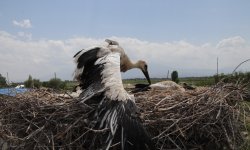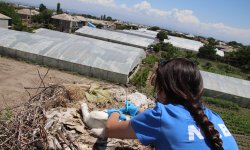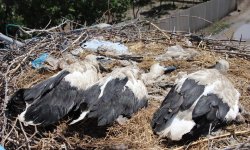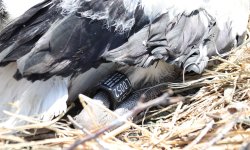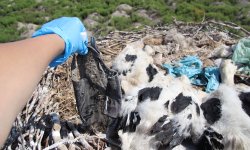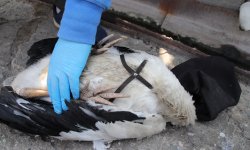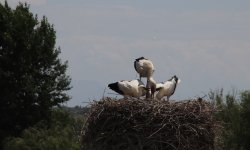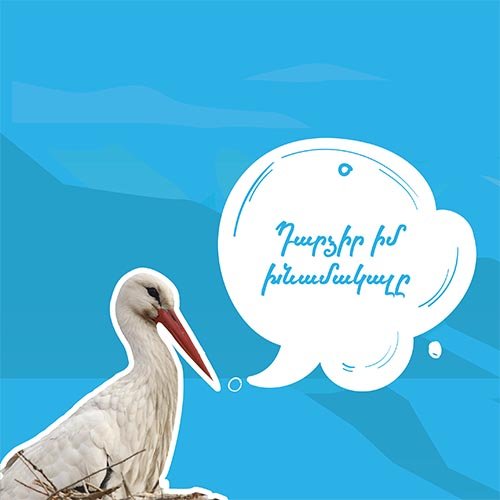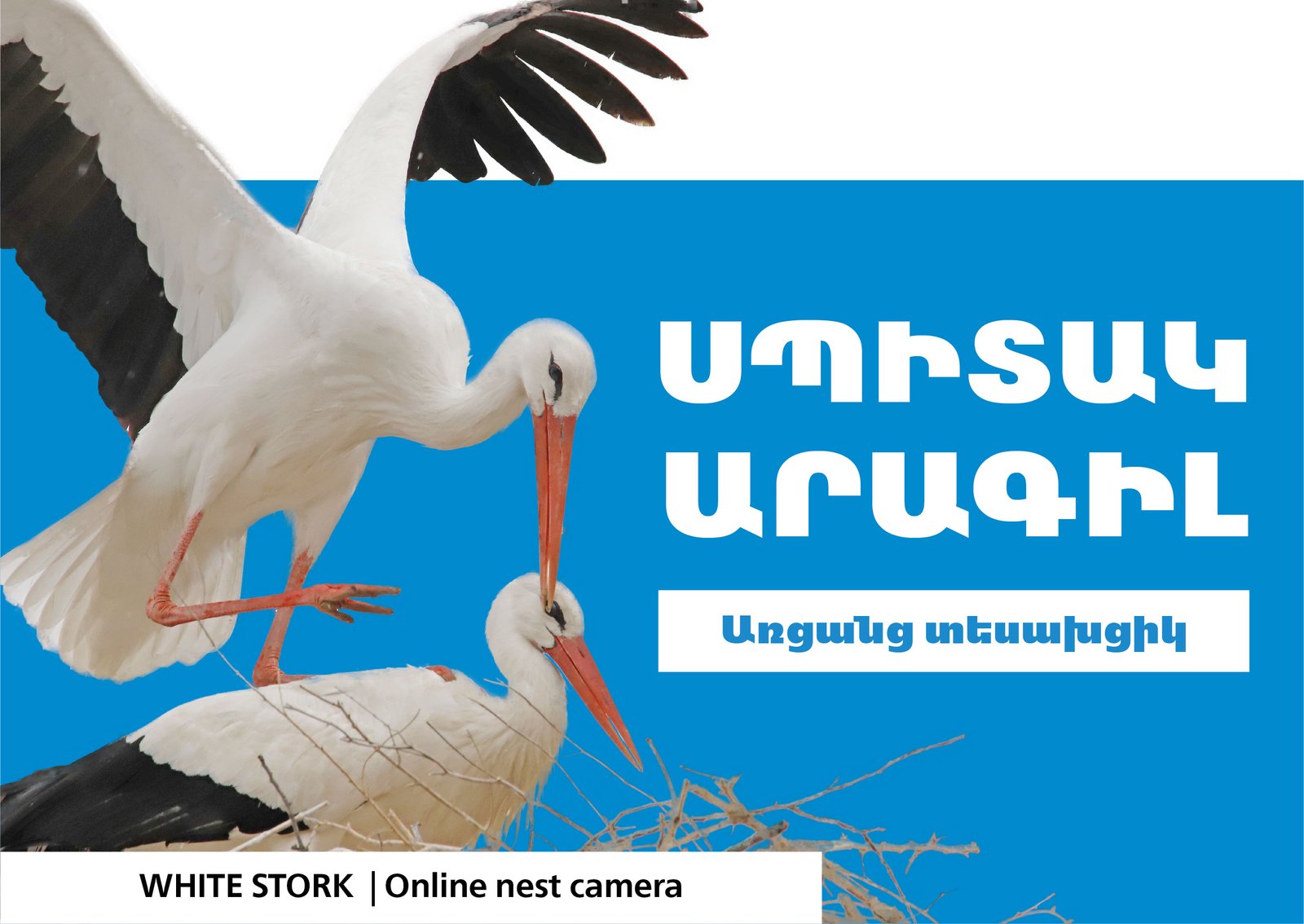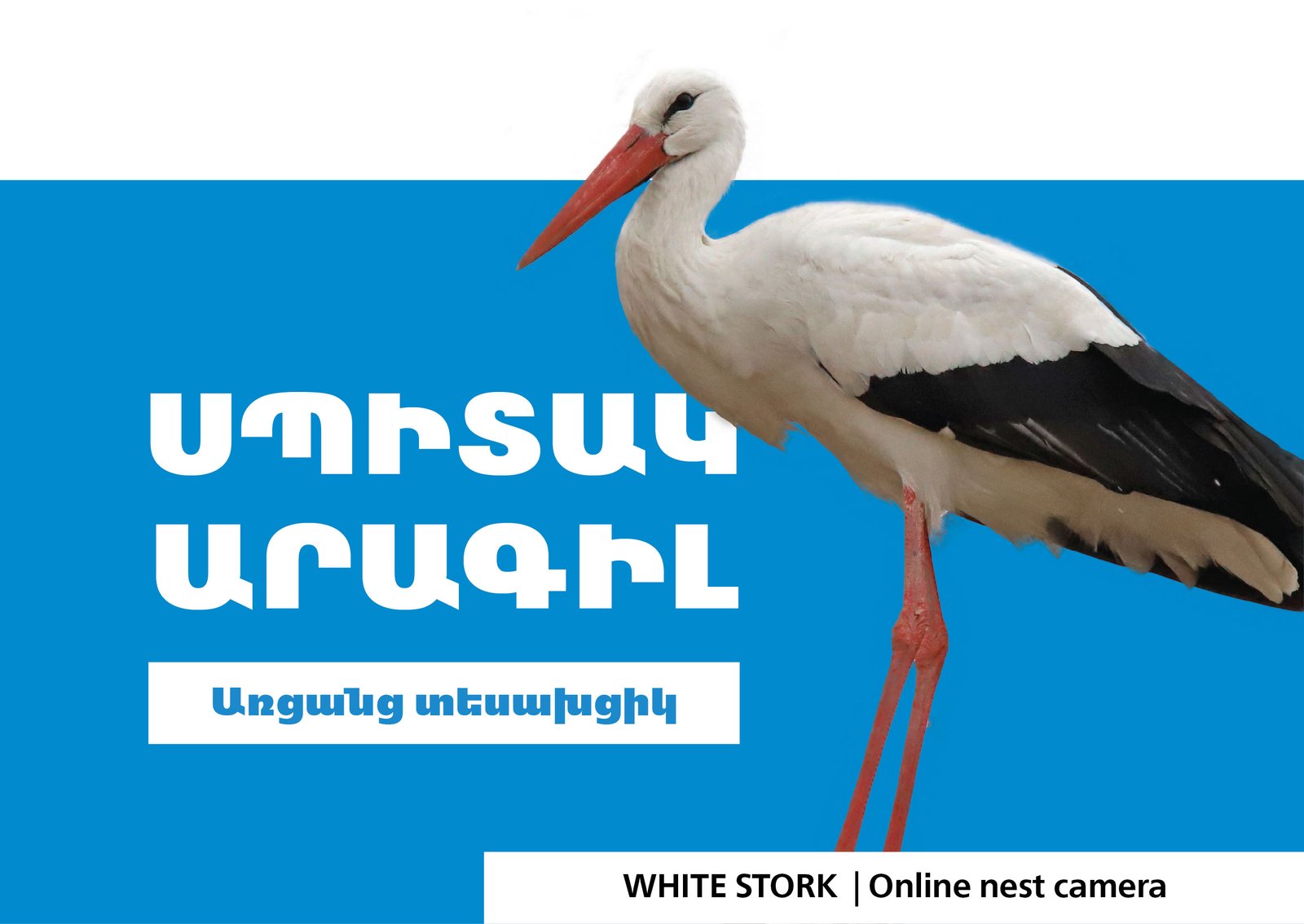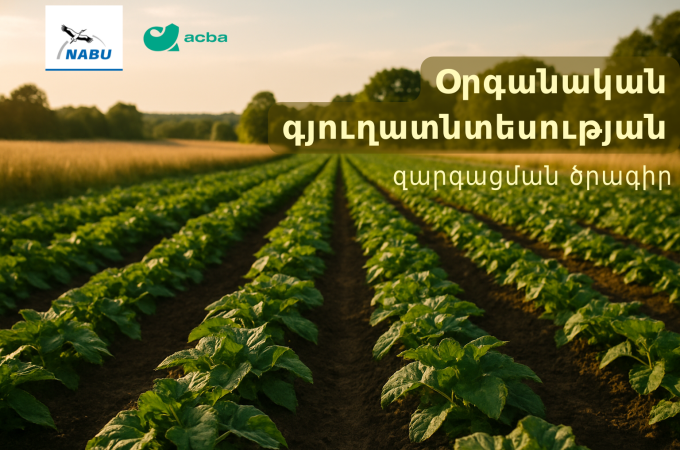Our specialists implemented ringing, tagging, and feather sampling of white storks.
The installation of GPS sensors aims to study the flight and local movement of birds.
GPS sensors were inserted on 4 young birds with varying degrees of contamination and 3 clean young birds, allowing us to track their movements and estimate the rate.
During the ringing process, a large accumulation of household waste was observed in the storks' nest, which they use as material for building their nest. The presence of household waste in stork nests indicates environmental pollution, which also has a negative impact on human health.
During the work, stork cubs entangled in various fishing, household, and technical nets and ropes were also observed. Some of them had already developed limb deformities, while others had fallen. However, some were successfully helped by freeing them from the entangled nets in time.
Since the previous years' feather sampling studies yielded contradictory results, three feather samples were taken this year to be sent to local and foreign diagnostic laboratories for a final conclusion.
Once we receive the results of the study, we will present them to you.

